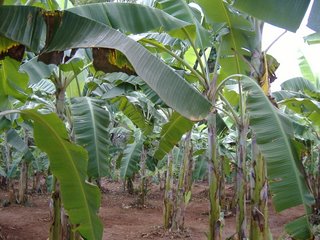Zanzibar Spice Tour Part 1:Vanilla and Cloves and All Yummy Plants

Our next stop in the Zanzibar countryside was down a rutted dirt road to a farm where
 many different delicious crops were planted.
many different delicious crops were planted.Simple wooden fences and gates separated plots from one another and it was often hard for my botanically-untrained eyes to tell the undergrowth from a valuable plant or the regular grass from the sweet-tasting lemon-grass until I nibbled it. It was shady and cool underneath the canopy of trees upon which many of the viny plants grew.

We walked among stands of banana trees, sampled a piece of cinnamon bark right from the tree, and marvelled at the strong bite of a fresh ginger root.

There were so many plants to taste and smell: bright orange turmeric and a pepper-corn right off the vine, yummy caramom seeds, long hanging vanilla vines, the exquisite and tiny flowers of cloves, and arabica coffee beans green on the tree. A young boy climbed into a tree and brought down a sample of mace (nutmeg) for us.
One of the farm workers sliced up a jack-fruit for us. They hung precariously pendulous in fat groups from low trees. The fibrous flesh was slightly sweet and somewhat bland but pleasant enough.

What did it taste like? "It tastes like jackfruit", shrugged Jeff later when I asked him to describe it.

We were also introduced to a "lipstick" plant whose pulpy seeds could stain lips and fingers a bright orange. Jeff's mom modelled it for us.

As we sampled and smelled, a man carrying a basket with tiny jars of perfume for sale appeared and I bought a vial of jasmine scent.












































